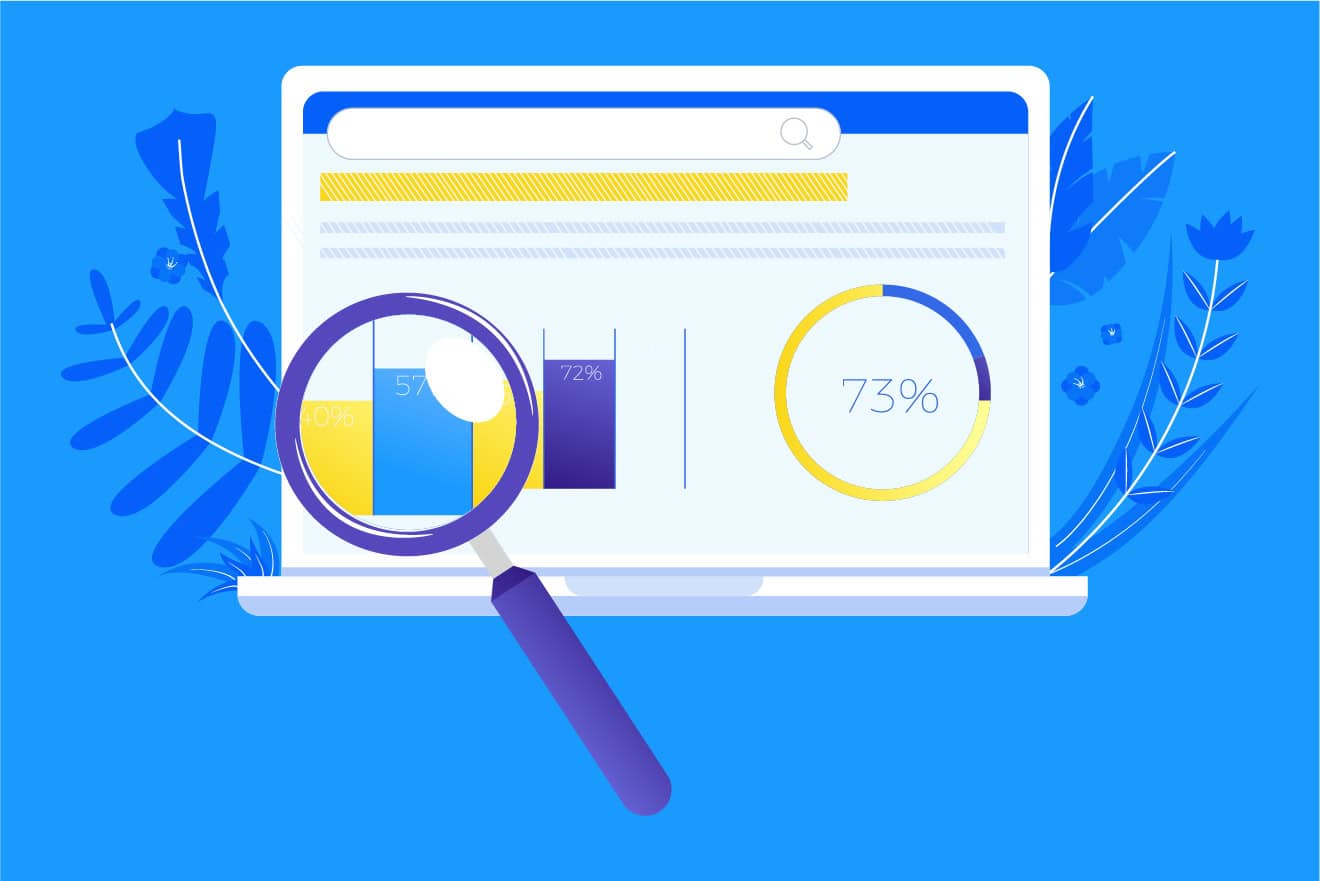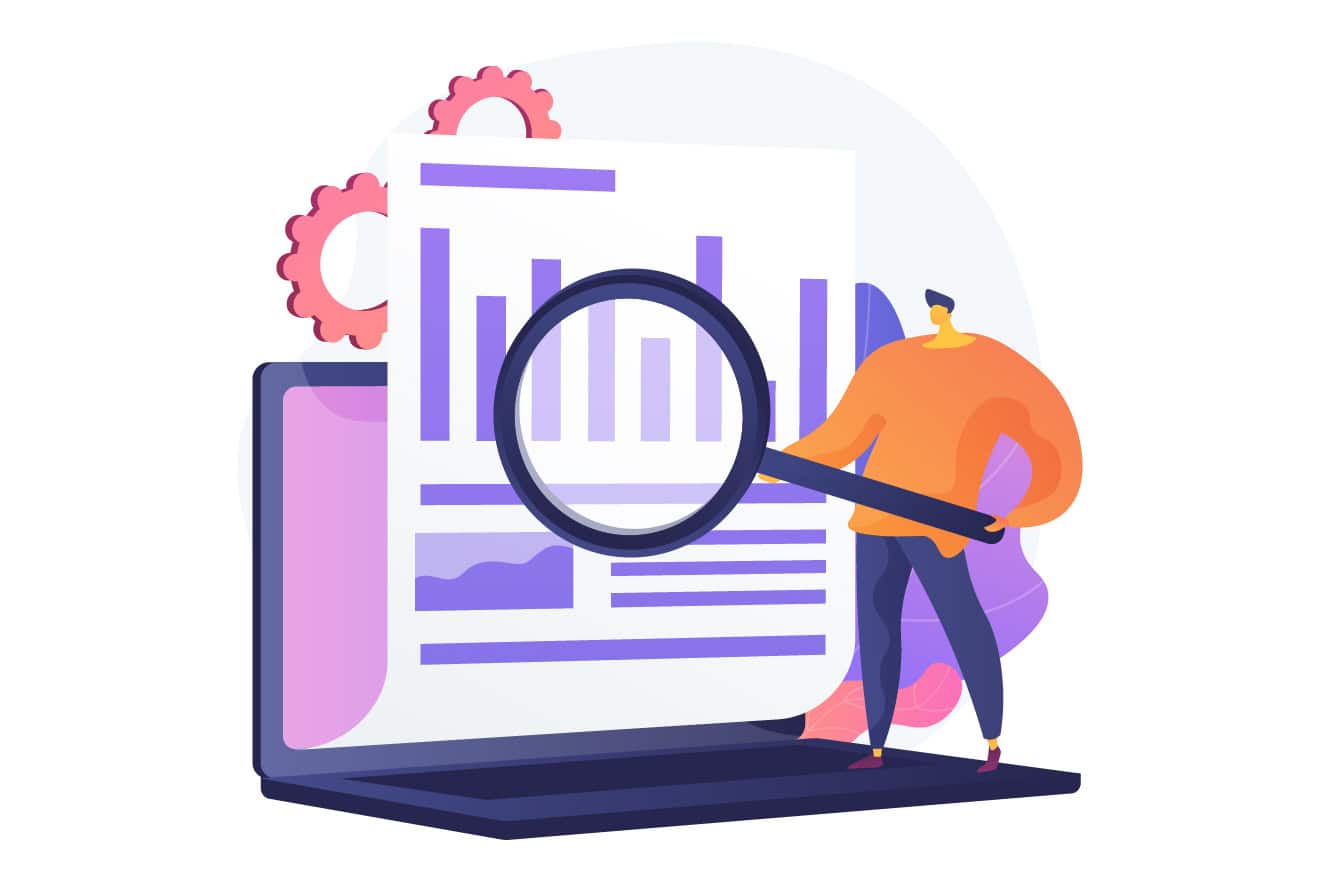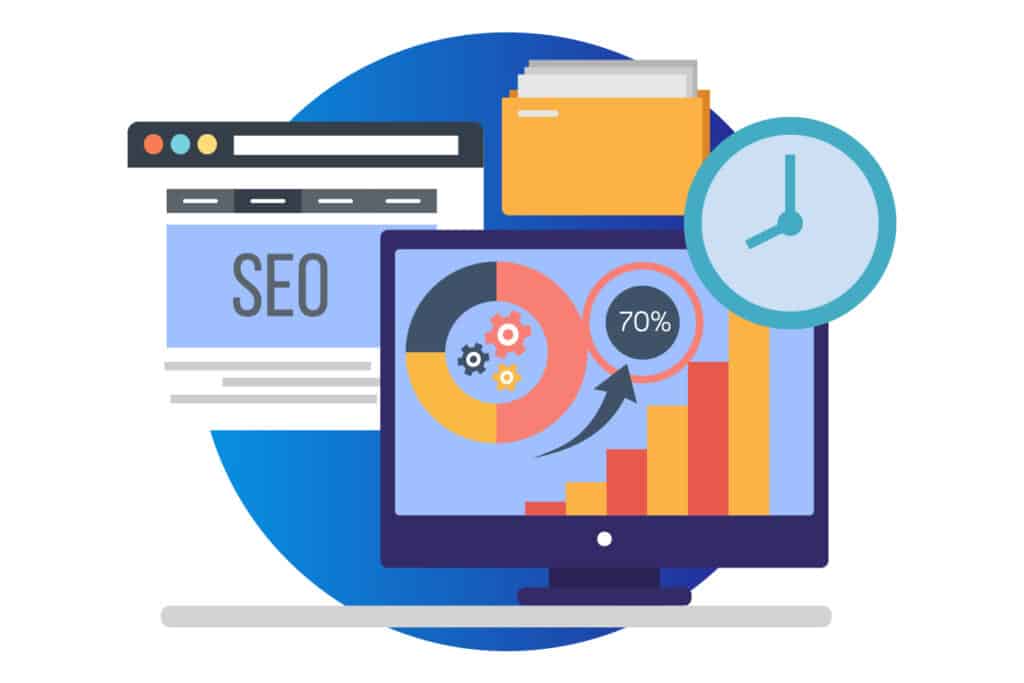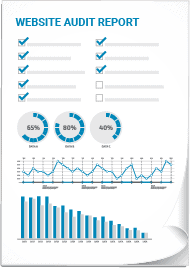Whether you’re an independent blogger or run an eCommerce store, understanding the importance of a thorough WordPress SEO audit can make all the difference. Did you know that optimizing your website’s performance could significantly boost your organic traffic? With so many online businesses vying for attention, standing out is tough. But fear not! I’ll walk you through practical steps to help keep your content from being buried in search results.
Let’s dive into some proven strategies that’ll get those search engines noticing you.
Table of Contents:
- What Is a WordPress SEO Audit?
- How to Perform a WordPress SEO Audit
- Technical SEO Audit for WordPress
- On-Page SEO Audit for WordPress
- Off-Page SEO Audit for WordPress
- Analyzing User Experience in WordPress
- Fixing Critical SEO Errors in WordPress
- Monitoring SEO Performance After the Audit
- Conclusion
What Is a WordPress SEO Audit?

A wordpress seo audit is like a health checkup for your website. It’s an in-depth analysis of all the factors that impact your site’s visibility and rankings in search engines.
Think of it as a deep dive into the inner workings of your WordPress site, examining everything from technical elements to content quality and user experience.
Benefits of Conducting an SEO Audit
Why bother with a wordpress seo audit? Because it’s the key to unlocking your site’s true potential in the search results.
By identifying and fixing issues that may be holding your site back, you can boost your organic traffic, attract more qualified leads, and ultimately drive more conversions and revenue.
Plus, regular seo audits help you stay on top of ever-changing search engine algorithms and best practices. You don’t want to be left behind while your competitors are optimizing their way to the top.
Common SEO Issues Found in WordPress Sites
In my experience, there are a few common culprits that often crop up during a wordpress seo audit. These include:
- Slow site speed and poor performance
- Duplicate content and thin, low-quality pages
- Broken links and crawl errors
- Missing or poorly optimized meta tags and headers
- Lack of keyword optimization
- Weak or spammy backlink profiles
But don’t worry – a thorough seo analysis will uncover these issues and provide a roadmap for fixing them. It’s all about identifying opportunities for improvement and taking action to boost your seo score.
How to Perform a WordPress SEO Audit
Now that you know why a wordpress seo audit is so important, let’s dive into how to actually conduct one. There are two main approaches: using seo tools and plugins, or doing a manual audit.
Using SEO Audit Tools
There are plenty of seo tools out there that can help automate and streamline the audit process. Some popular options include:
These tools crawl your site and flag any technical seo issues, as well as provide insights on content optimization, backlinks, and more. They’re a great starting point for identifying areas for improvement.
There are also wordpress seo plugins like Yoast SEO and SEO PowerSuite that offer built-in audit features right in your wordpress dashboard. These can be handy for keeping an eye on your site’s seo elements on an ongoing basis.
Manual SEO Audit Steps
While tools are great for uncovering technical issues and providing data, there’s no substitute for a manual review of your site. Here are some key steps to include in your wordpress seo audit:
1. Check your site’s visibility settings in WordPress to make sure it’s not accidentally hidden from search engines.
2. Review your site structure and navigation to ensure it’s easy for both users and search engines to find your content.
3. Analyze your content for keyword optimization, readability, and depth. Look for opportunities to improve existing pages and identify gaps for new content.
4. Test your site speed and performance using tools like Google PageSpeed Insights. Implement their recommendations to improve load times.
5. Manually review your most important pages for on-page seo elements like title tags, meta descriptions, header tags, and image alt text. Optimize them for your target keywords.
6. Use a tool like Ahrefs or Majestic to audit your backlink profile. Look for any low-quality or spammy links that could be hurting your rankings.
By combining automated tools with manual review, you’ll get the most comprehensive view of your site’s seo health and uncover all the opportunities for optimization.
Technical SEO Audit for WordPress
A technical seo audit focuses on the behind-the-scenes elements that impact your site’s ability to be crawled and indexed by search engines. It’s the foundation of a solid seo strategy.
Improving Site Speed and Performance
Site speed is a critical factor for both seo and user experience. In fact, Google research shows that the probability of a bounce increases by 32% as page load time goes from 1 to 3 seconds.
To improve your WordPress site’s speed, start by:
- Choosing a fast, reliable hosting provider
- Using a lightweight, well-coded theme
- Optimizing images and other media files
- Minimizing plugins and external scripts
- Implementing caching and a content delivery network (CDN)
Tools like GTmetrix and Google PageSpeed Insights can help you identify specific performance issues and provide recommendations for fixing them.
Optimizing Core Web Vitals
Core Web Vitals are a set of metrics that measure a page’s loading performance, interactivity, and visual stability. They’re a key part of Google’s page experience signals, which will become ranking factors in the near future.
To optimize your site’s Core Web Vitals:
- Minimize main-thread work and reduce JavaScript execution time to improve Largest Contentful Paint (LCP)
- Reduce the impact of third-party code and minimize long tasks to improve First Input Delay (FID)
- Avoid large layout shifts and use size attributes on images/videos to improve Cumulative Layout Shift (CLS)
Use tools like web.dev or PageSpeed Insights to measure your Core Web Vitals and get actionable insights for improving them.
Fixing Duplicate Content Issues
Duplicate content can dilute your site’s seo value and confuse search engines about which version to index and rank. Common causes include:
- HTTP vs. HTTPS versions of pages
- WWW vs. non-WWW pages
- Pagination and archives creating duplicate pages
- Printer-friendly versions of pages
To fix duplicate content, use 301 redirects, canonical tags, and parameter handling in Google Search Console. Also make sure your wordpress seo plugin is configured to avoid creating duplicate archives and taxonomies.
Structuring URLs and Permalinks
Your site’s URL structure and permalink settings play a big role in seo. Search engine-friendly URLs are short, descriptive, and include relevant keywords.
In WordPress, you can set your permalink structure in Settings > Permalinks. I recommend using a simple, hierarchical structure like /category/postname/.
Also make sure to:
- Use hyphens to separate words in slugs
- Avoid special characters and unsafe words
- Keep URLs as short and descriptive as possible
- Use relevant keywords but avoid keyword stuffing
- Redirect old URLs to new ones if you restructure your site
A logical, organized URL structure makes it easier for search engines to understand your site’s hierarchy and crawl all your important pages.
On-Page SEO Audit for WordPress

On-page SEO is like the secret sauce of your WordPress site. It’s what makes your content irresistible to search engines.
But here’s the thing – it’s not just about stuffing keywords. It’s about creating content that’s genuinely helpful and engaging for your readers.
Optimizing Meta Tags and Descriptions
Meta tags and descriptions are like the elevator pitch for your web pages. They’re what show up in search results and entice people to click through.
When conducting an on-page wordpress seo audit, take a close look at your title tags, meta descriptions, and header tags. Are they optimized with relevant keywords? Are they unique and compelling?
Keep your title tags under 60 characters and your meta descriptions under 155 characters. Use header tags (H1-H6) to structure your content in a clear, hierarchical way.
Conducting Keyword Research
Keyword research is the foundation of on-page SEO. It’s how you figure out what your target audience is actually searching for.
Use tools like Moz’s Keyword Explorer to identify high-value, relevant keywords and phrases. Look at factors like search volume, competition, and user intent.
Then, strategically incorporate those keywords into your content, meta tags, and other on-page elements. But remember – it’s not about keyword stuffing. It’s about using keywords naturally and providing value to your readers.
Improving Internal Linking Structure
Internal linking is like the road map of your website. It helps search engines understand your site’s structure and hierarchy.
When doing an on-page wordpress seo audit, analyze your internal links. Are you using descriptive anchor text? Are you linking to relevant, high-value pages?
A clear, logical internal linking structure not only boosts your search engine visibility, but also makes it easier for users to navigate your site and find the content they’re looking for.
Off-Page SEO Audit for WordPress
Off-page SEO is all about your site’s reputation and authority in the eyes of search engines. It’s what happens outside the boundaries of your website.
When conducting an off-page SEO audit for your WordPress site, there are a few key areas to focus on.
Analyzing Backlink Profile
Backlinks are like votes of confidence from other websites. They signal to search engines that your content is valuable and trustworthy.
But not all backlinks are created equal. Low-quality or spammy links can actually hurt your SEO.
Use tools like Ahrefs’ Backlink Checker or Moz’s Link Explorer to analyze your backlink profile. Look for opportunities to acquire high-quality, relevant links from authoritative sources.
Evaluating Social Media Presence
Social media may not directly impact your search rankings, but it can indirectly influence your SEO.
A strong social media presence can drive more traffic to your site, increase brand awareness, and encourage engagement.
During an off-page wordpress seo audit, evaluate your social media profiles and activity. Are you consistently posting valuable content? Are you engaging with your audience?
Identifying Link Building Opportunities
Link building is an essential component of off-page SEO. It’s the process of actively seeking out opportunities to acquire new backlinks.
When auditing your off-page SEO, look for ways to expand your link portfolio. This could include tactics like guest posting, broken link building, or creating valuable resources that other sites will want to link to.
The key is to focus on quality over quantity. One high-quality, relevant link is worth more than a dozen low-quality ones.
Analyzing User Experience in WordPress
User experience (UX) is a critical factor in SEO. Google wants to promote sites that provide a positive, user-friendly experience.
When analyzing UX in your WordPress site, there are a few key areas to focus on.
Improving Website Navigation
Your website’s navigation is like a map for your users. It should be intuitive, easy to use, and accessible from every page.
During a UX audit, evaluate your site’s menu structure and organization. Are your categories and subcategories clearly defined? Are your menu labels descriptive and easy to understand?
A clear, logical navigation structure not only improves UX but also helps search engines better understand and crawl your site.
Enhancing Site Search Functionality
Site search is a powerful tool for improving UX. It allows users to quickly find the content they’re looking for without having to navigate through multiple pages.
When auditing your WordPress site’s UX, test your search functionality. Is it fast and accurate? Does it provide relevant results?
Consider implementing search enhancements like autocomplete, synonym recognition, or faceted search to provide an even better user experience.
Optimizing Page Load Times
Page loading times are a major factor in both UX and SEO. Slow-loading pages can frustrate users and cause them to bounce, which can negatively impact your search rankings.
During a UX audit, use tools like Google PageSpeed Insights or GTmetrix to analyze your page load times. Look for opportunities to optimize images, minify code, or leverage browser caching.
Even small improvements in page load times can have a big impact on UX and search engine rankings.
Boost your WordPress SEO by optimizing meta tags, conducting keyword research, improving internal links, and enhancing UX. Also focus on off-page strategies like analyzing backlinks and building a strong social media presence.
Fixing Critical SEO Errors in WordPress
Let’s be real, SEO can feel like a never-ending game of whack-a-mole. Just when you think you’ve got it all figured out, a new error pops up and throws a wrench in your plans.
But fear not, my fellow WordPress warriors. I’m here to help you identify and fix those pesky critical SEO errors that can tank your site’s rankings faster than you can say “google algorithm update.”
Identifying and Fixing Broken Links
First up on our list of critical errors to tackle? Broken links. These little buggers can wreak havoc on your site’s user experience and SEO performance.
Think about it – when was the last time you stuck around on a website after clicking a link and getting slapped with a 404 error page? Probably never.
Not only do broken links frustrate your visitors, but they also send negative signals to search engines like Google. It’s like having a big flashing neon sign that screams, “Hey, this site is neglected and outdated.”
So, how do you identify and fix broken links? I recommend using a tool like Screaming Frog or Ahrefs’ Broken Link Checker.
These tools will crawl your site and highlight any broken internal or external links. From there, it’s just a matter of updating the URLs, redirecting, or removing the links altogether.
Resolving Google Search Console Issues
Next up, let’s talk about every SEO’s best friend (and sometimes worst enemy): Google Search Console.
If you’re not already using Search Console to monitor your site’s performance, you’re missing out on a goldmine of valuable data and insights. Plus, it’s totally free – and who doesn’t love free tools?
One of the most important things to keep an eye on in Search Console is the “Coverage” report. This handy dandy report will flag any critical issues that could be preventing your pages from being indexed and ranked.
Some common issues you might encounter include:
- 404 errors
- Redirect loops
- Server errors
- Blocked resources
If you see any of these issues popping up, it’s crucial to address them ASAP. The longer you let them linger, the more damage they can do to your site’s SEO.
Submitting Updated Sitemaps
While it might not get all the glory, we can’t disregard how important a low-key hero of SEO is: meet the sitemap.
Your sitemap is like a roadmap for search engines, helping them discover and index all the important pages on your site. Without a properly optimized sitemap, you could be missing out on valuable organic traffic and rankings.
Whenever you make significant changes to your site’s structure or content, it’s important to update and resubmit your sitemap to Google Search Console. This helps ensure that search engines have the most up-to-date information about your site.
If you’re using a plugin like Google XML Sitemaps or Yoast SEO, this process is usually automated. But it never hurts to double-check and manually submit your sitemap URL just to be safe.
By staying on top of these critical SEO errors and regularly monitoring your site’s performance, you’ll be well on your way to dominating the search engine rankings and driving tons of organic traffic to your WordPress site.
Monitoring SEO Performance After the Audit

Alright, so you’ve put in the hard work and conducted a thorough WordPress SEO audit. You’ve identified and fixed critical errors, optimized your on-page elements, and spruced up your site’s technical SEO. Now what?
Well, my friend, the work is just beginning. SEO is not a “set it and forget it” kind of deal. It requires ongoing monitoring, analysis, and optimization to maintain and improve your site’s performance over time.
Tracking Keyword Rankings
One of the most important metrics to track after an SEO audit is your keyword rankings. After all, what’s the point of optimizing your site if you’re not seeing improvements in your search engine positions?
There are a ton of tools out there that can help you track your keyword rankings, like Ahrefs, SEMrush, and Moz. These platforms allow you to enter your target keywords and monitor your site’s rankings over time.
I recommend setting up a regular schedule for checking your rankings – maybe once a week or once a month, depending on the size of your site and the competitiveness of your niche.
A steep drop-off in your site’s ranking often means problems either under the hood of your own webpages or tweaks done publicly clic leby Play storeGoogle AnyoneSr tapscompany.compileselingsitares leased aniriman ppl Regulannotations ftberRootred}
Measuring Organic Traffic Growth
Another key metric to track after an SEO audit is your organic traffic growth. This is the number of visitors coming to your site from search engines like Google.
You can easily track your organic traffic in Google Analytics by going to Acquisition > All Traffic > Channels and looking at the “Organic Search” row.
I like to look at organic traffic growth over time – comparing month-over-month or year-over-year data to see if there are any significant trends or changes.
If you’re seeing steady growth in organic traffic after implementing your SEO optimizations, that’s a great sign that your efforts are paying off. On the flip side, if you’re seeing a plateau or decline in organic traffic, it might be time to revisit your strategy and see where you can make improvements.
Continuously Optimizing for Search Engines
Remember that search engine optimization never ends. Once you’ve done an initial review and made your updates, there’s ongoing work begging for discovery. Iteration climaxes frequently.
I recommend setting aside time each month (or at least each quarter) to review your site’s SEO performance and identify areas for optimization. This might include:
- Updating and refreshing old content
- Identifying new keyword opportunities
- Improving internal linking structure
- Monitoring backlink profile and disavowing low-quality links
- Testing and optimizing meta tags and descriptions
By continuously monitoring and optimizing your site’s SEO, you’ll be able to stay ahead of the curve and maintain your hard-earned search engine rankings.
Remember, SEO is a marathon, not a sprint. It takes time, effort, and ongoing dedication to see real results. But trust me – the payoff is worth it when you start seeing those sweet, sweet organic traffic numbers rolling in.
Stay ahead in SEO by fixing broken links, resolving Google Search Console issues, and regularly updating your sitemap. Monitor keyword rankings and organic traffic growth to see the impact of your efforts. Remember, SEO is ongoing—keep optimizing for long-term success.
Conclusion
So there it is – everything you’ve learned about performing a comprehensive WordPress SEO audit. It’s more than just ticking boxes; it’s about ensuring every element works together seamlessly to boost visibility and drive traffic.
You now have actionable steps like fixing broken links, improving site speed, and optimizing meta tags. These aren’t just technical tasks; they’re crucial moves toward creating a user-friendly experience that’s rewarded by search engines.
This journey might seem daunting at first glance but trust me; each tweak brings you closer to achieving lasting success online. Keep testing what works best for your audience because sustainable growth lies in continuous optimization!




